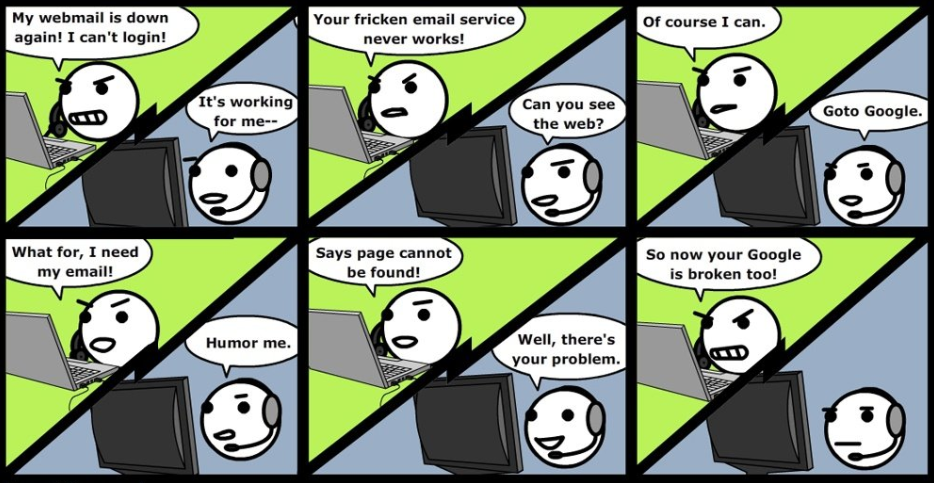When it comes to marketing and selling your own premium WordPress themes, there are several tutorials out there which explain almost everything that you need to know — from design and HTML/CSS to PHP coding and debugging.
However, a theme shop, just like any other business, is assessed not just by your ability to release quality products but also by your capability to back them up and offer support to your customers and clients. In this article, I shall be taking a closer look at some of the top support options and considerations when it comes to running a WordPress theme business.
Supporting Your WordPress Themes: Some Considerations
The Homework – a.k.a. The Documentation
If the documentation that you provide alongside your themes is well detailed and easy to comprehend, you can easily lessen the efforts that will be required when answering the support questions about your themes.
First up, it is common knowledge that you should, by all means, attempt to provide as much basic and preliminary information about your WordPress themes as possible, right in the documentation itself. Frequently Asked Questions, or FAQs, are a good place to talk about basic theme setup, refund and support terms, your working hours, etc. This way, your clients can be informed about what to expect and also be aware of stuff such as known issues and compatibility.
Beyond that, however, what about the actual theme documentation? The approaches for the same are many, and you need to pick the ones that best suit your needs and are manageable.
There are multiple ways in which you can present your support documentation for your users. A common and very popular trend nowadays is to make use of video tutorials and guides to help the users with the installation and customization of the themes. Considering the popularity of such video tutorials, having some on your own site is surely not a bad idea. For instance, WooThemes, one of the leading names when it comes to WordPress themes, have an entire library of such video tutorials, which address topics such as usage of shortcodes, theme customization, theme upgrades, and even basics such as using widgets, installing themes and creating or editing posts.
Furthermore, if you can implement custom back-end demos and drag and drop walk-throughs, it is an added advantage. However, you should bear in mind that such videos tutorials and other related concepts are a supplement to the actual documentation. Your real documentation must, by all means, exist in text form for your users to read and explore. What if one of your customers is out traveling, and he or she has limited bandwidth? Text articles, in this case, will prove most effective than videos. As such, you should surely have video tutorials if possible, but do not eliminate the textual documentation!
However, there will often be cases when the documentation will fail to suffice, and this is where your support policy shall come in to play!
Framing Your Support Policy
Let us now take a look at some of the major questions that theme shop owners face when framing their support policy.
What Should Your Support Cover?
This is one of the foremost questions.
It is a generally acceptable practice to exclude certain aspects and issues when framing your support policy. For instance, here is a list of issues that are often NOT covered by theme shops when offering support to their customers:
- Issues with outdated versions of WordPress
- Third-party elements, especially plugins
- Issues that pertain to the web hosting firm
Beyond that, a very specific debate can be: should you offer just theme support, or also help out with theme customization support?
Most of the time, theme makers only offer theme support (which generally includes problems with the theme itself), and even if they do offer theme customization support, there is a separate premium fee for it. Problem is, that most of the casual clients tend to use “theme support” and “theme customization support” as synonyms. Thus, you should clarify these two terms in your support policy up front, and also specify whether you are open to theme customization support or not.
How Should You Implement The Support Mechanism?
The implementation of the support mechanism is a rather tricky situation. We shall first attempt to analyze the major models that are available in this section.
The first and most common method is to offer support by means of support tickets and community forums. Any user who purchases a theme automatically gets a forum account wherein he or she can check out older threads and even post newer questions. Similarly, users can create support tickets directly from their customer portals, which your support team can answer and resolve. This model has been well tried and tested, and there seems to be no reason why you should not opt for it.
However, what about email support? While there are certain theme shops that do not neglect email communication, the general consensus is to steer away from it and only offer member-only support via tickets and forums. DevPress, in their support policy, sum it up as under:
Email is very difficult to manage. For one, there’s no way to check on the progress of support requests. Secondly, beside exclusive themes, DevPress releases free themes to give back to the community. An unfortunate side effect is many WordPress users want free support via email as well. Some go as far as insulting and demanding free support.
On the other hand, you should not entirely get rid of the email contact system either. For instance, an email is probably the easiest option when it comes to pre-sales questions and general queries about your refund policy, etc. Of course, for technical support, you can definitely take the stand that DevPress have adopted.
Another similar consideration can be that regarding social media. What if your users post a comment on your Facebook page regarding a bug? Simple questions can of course by answered therein, but if you wish to keep your support system centralized and do not intend to use social networking sites for support queries, just inform your users and also point them to your support forums or ticketing portal.
Some Final Considerations
Lastly, make sure you clarify the preliminary details such as your working hours and the scope of your support policy. Furthermore, you should also specify the validity of your support, just to avoid confusions later on. Gabfire Themes, for instance, offer one year free support, starting from the date of purchase. Thereafter, users can purchase additional support access for subsequent years.
In the same way, you should also clarify your refund policy. StudioPress, for example, offer a 30-day money-back guarantee. On the other hand, theme shops such as WPZOOM do not do so, citing the tangible nature of the goods sold.
A support policy, before anything else, should be a user-first consideration. Your users should know what to expect — having a properly defined support policy goes a long way ensuring the prosperity of your WordPress theme business and also proves helpful in winning the trust and loyalty of your customers.
Do you run or manage your own WordPress theme business? If so, what is your preferred support policy and how do you implement it? Share your experiences with the world using the comment form below!
Image Credits: Ingelsby and ncomment via Flickr





2 Comments